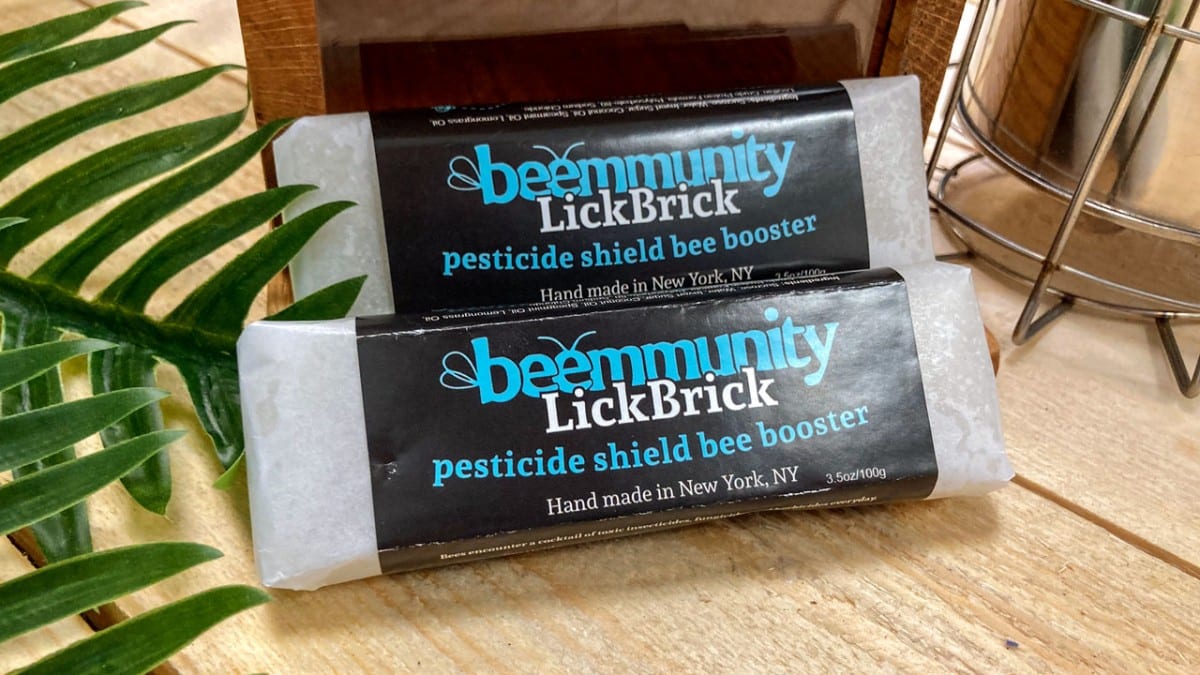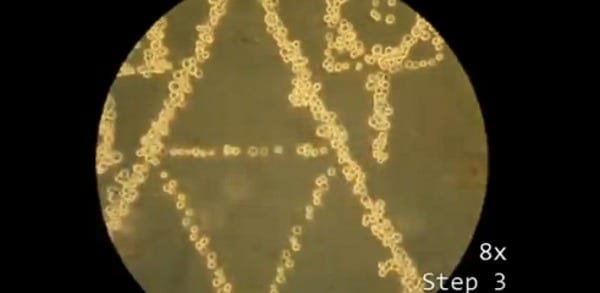
Every spring, a host of unwelcome visitors descends on the Hansen farm in upstate New York. Diamondback moths blown in from the South threaten rows of cabbages to be sold for slaw and sauerkraut.
The moths can’t be fought off with a single insecticide. Workers must spray a series of chemicals throughout the growing season to keep the moths’ numbers in check.
“You have to rotate what chemical you use so you don’t get a buildup in resistance,” said Ed Hansen Jr., whose family has farmed the land for nearly a century. This adaptability, he said, makes the moths one of the worst pests to deal with each season.
At a university laboratory down the road, scientists are hoping to substitute sex for sprays. They have genetically modified thousands of diamondback moths, infusing them with DNA designed to kill female larvae. In August, the researchers began introducing the altered moths into outdoor cages in a field, where their mating habits will be monitored.
If the results are promising, the transgenic moths will be released into a small cabbage patch next summer. It would be the first experimental release on American soil of insects genetically engineered to self-destruct.
A plan to let similar transgenic mosquitoes loose in Key West, Fla., has met with strong opposition amid fears about being bitten. But federal regulators seem to have few worries about the safety of the moth experiments.
“Our goal as a community is to reduce the amount of pesticides used in agriculture,” said Anthony Shelton, the entomologist running the experiments at the Cornell University Agricultural Experiment Station. “Why not use genetics to accomplish this?”
An invasive species, the diamondback moth was once a minor nuisance. It became an agricultural headache in the late 1940s as chemical pesticide use exploded. The moth, the first crop pest to evolve resistance to DDT, multiplied as feebler competitors died off.
Today, the pest is found where kale, broccoli, Chinese cabbage and other cabbage cousins grow. Hungry caterpillars that hatch from eggs laid on the plants cost farmers an estimated $5 billion a year worldwide. And the diamondback moth continues to adapt to new generations of pesticides. In Malaysia, it is immune to all synthetic sprays.
In the 1990s, scientists searching for alternatives to pesticides bombarded diamondback moths with gamma rays to sterilize them. This tactic had eradicated from the United States a parasitic fly larva called the screwworm; for decades, hordes of radiation-sterilized male flies were released in the wild, outcompeting fertile males and reducing the population.
But the diamondback resisted even radiation. So Oxitec, the British biotechnology company working with Dr. Shelton, found another way to sabotage diamondback reproduction. The company, an Oxford University spinoff, stitched together scraps of DNA from a virus and a bacterium to make a gene deadly to female insects.
A female larva harboring the gene is dependent on regular feedings of the antibiotic tetracycline to survive. Out in the wild, she dies long before reaching adulthood.
Read more: Replacing Pesticides With Genetics
The Latest on: Replacing Pesticides With Genetics
[google_news title=”” keyword=”Replacing Pesticides With Genetics” num_posts=”10″ blurb_length=”0″ show_thumb=”left”]
via Google News
The Latest on: Replacing Pesticides With Genetics
- Pesticides and Parkinson's Disease: Playing Genetic Roulette?on May 2, 2024 at 5:00 pm
Recent research delves into the connection between Parkinson's and pesticide exposure, shedding light on how genetic predispositions of lysosomes may interact with environmental toxins to pave a path ...
- Study links agricultural pesticide exposure to increased genetic variants in Parkinson’s diseaseon May 1, 2024 at 5:04 am
Recent research has highlighted the role of autophagic function in PD etiology, with mutations in the glucosylceramidase beta (GBA1) gene increasing the likelihood of developing PD. In the present ...
- Genetic Variants May Amplify Parkinson’s Risks — But How?on April 26, 2024 at 3:51 am
Potential connections between genetic variants and pesticide exposure raise questions about additional gene-pesticide interactions as revealed by a new UCLA Health study (1 Trusted Source ...
- Genetic variants linked to Parkinson's risk from pesticide exposureon April 25, 2024 at 9:20 pm
A new UCLA Health study found certain genetic variants could help explain how long-term pesticide exposure could increase the risk of Parkinson's disease.
- Pesticides found in up to HALF of childrens' apple juice bottles could lead to PARKINSONS, new study suggestson April 25, 2024 at 8:59 am
Exposure to a trio of pesticides found in up to half of all bottles of childrens' apple juice could increase the risk of developing Parkinson's disease in those with a genetic vulnerability ...
- Gene Variants Linked to Parkinson’s Disease after Long-Term Pesticide Exposureon April 24, 2024 at 5:00 pm
A study by University of California, Los Angeles (UCLA) scientists has now found that certain rare genetic variants might help to explain the relationship between pesticide exposure and risk of ...
- Genetic variations may predispose people to Parkinson's disease following long-term pesticide exposure, study findson April 24, 2024 at 5:00 pm
A new study found certain genetic variants could help explain how long-term pesticide exposure could increase the risk of Parkinson's disease. A new UCLA Health study found certain genetic ...
- 'Unhealthy dose' of pesticides found in popular produce, new report revealson April 18, 2024 at 12:26 pm
About 20% of all fruits and vegetables examined by Consumer Reports in a new report revealed an "unhealthy dose of dangerous pesticides." Consumer Reports published the report — its "most ...
- Fresh and frozen imported strawberries highly contaminated with pesticides, report sayson April 18, 2024 at 11:04 am
Carbamates were developed to replace older ... spontaneous abortions and an increase in genetic damage in humans. Exposure to pesticides has also been associated with heart disease, cancer ...
- Fresh and frozen imported strawberries highly contaminated with pesticides, report sayson April 18, 2024 at 9:40 am
Some fresh, frozen and canned nonorganic fruits and vegetables are contaminated with concerning levels of pesticides, according to an investigation by Consumer Reports, a nonprofit consumer ...
via Bing News










